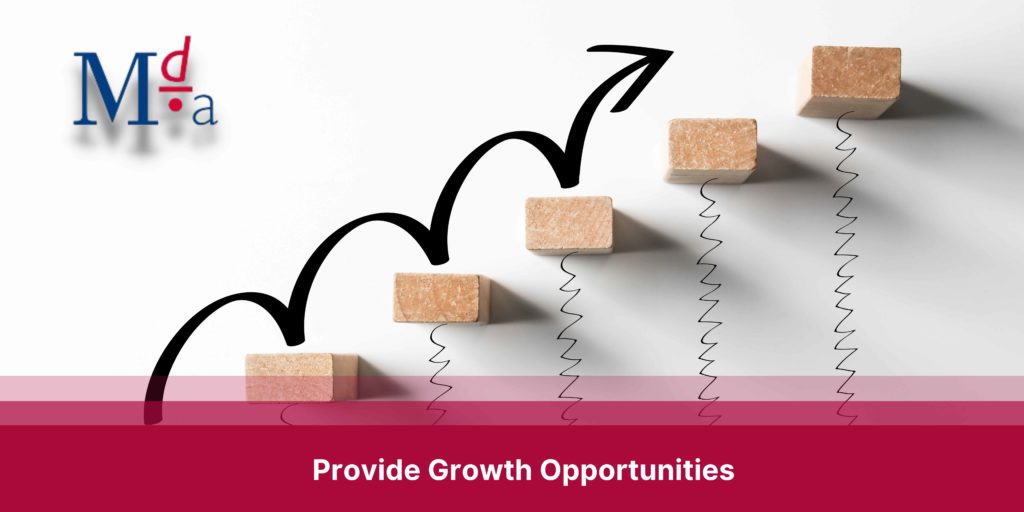In the modern professional landscape, the concept of work has evolved beyond the traditional 9 to 5 routine. Employers and employees alike recognise the significance of crafting a workplace where belonging is a cornerstone. In this comprehensive guide, we’ll delve into 9 strategies that empower businesses to foster an environment where every individual feels valued and connected. Let’s explore effective strategies to achieve this:
1. Embrace Diversity Wholeheartedly
Diversity is more than a buzzword; it’s the cornerstone of a thriving workplace. By welcoming individuals from various backgrounds, experiences, and perspectives, you enrich your team’s collective wisdom. Encourage open conversations about differences and create platforms for sharing unique viewpoints.
Establish Inclusive Policies
In the realm of modern workplaces, crafting an environment where every individual feels a profound sense of belonging is paramount. One of the most effective ways to achieve this is by establishing inclusive policies that foster a fair and equitable atmosphere for all employees.
Creating a Framework of Fairness
Inclusive policies form the backbone of an organisation’s commitment to diversity and belonging. These policies serve as a blueprint for ensuring that every employee, regardless of their background, identity, or characteristics, is treated with fairness and respect. By setting clear guidelines and standards, you create a work environment where discrimination and bias are not tolerated.
Preventing Discrimination and Bias
Inclusive policies actively address potential sources of discrimination and bias that might exist within the workplace. Whether it’s during the hiring process, promotions, performance evaluations, or daily interactions, these policies provide a safeguard against unfair treatment. They send a powerful message that the organisation values the contributions of each individual and is dedicated to fostering a culture of inclusivity.
Equal Opportunities for All
At the heart of inclusive policies lies the principle of equal opportunities. These policies ensure that every employee has an equal chance to succeed, grow, and thrive within the organisation. This extends beyond the scope of work-related matters and encompasses all aspects of employment, including training, development, benefits, and access to resources.
Transparency and Clarity
Inclusive policies should be transparent and easy to understand. When employees are aware of their rights, responsibilities, and the organisation’s commitment to inclusivity, they feel empowered to speak up against any perceived injustices. Transparency also fosters a sense of trust between employees and the organisation’s leadership.
Collaborative Development
Crafting inclusive policies is not a one-size-fits-all endeavour. It requires collaboration and input from various stakeholders, including employees from diverse backgrounds, HR professionals, legal experts, and leadership. By involving different perspectives, you ensure that the policies are comprehensive and considerate of the unique challenges that different groups might face.
Continuous Evaluation and Improvement
Inclusive policies should not remain static. Regular evaluation and adjustment are essential to keep them aligned with the evolving needs of the organisation and the workforce. Collect feedback from employees, assess the impact of the policies, and make necessary improvements to ensure that they remain effective in fostering belonging.
2. Promote Transparent Communication
Effective communication is the lifeblood of any thriving workplace, and promoting transparent communication is an essential aspect of crafting an environment where belonging truly matters. When employees are informed, engaged, and empowered through open and honest communication channels, the entire organisation reaps the benefits.
The Power of Open Dialogue
Transparent communication is more than just relaying information; it’s about fostering an atmosphere of open dialogue. Encouraging employees to ask questions, express concerns, and share their insights creates a sense of belonging and trust. When individuals feel that their voices are heard and valued, they are more likely to be invested in the organisation’s success.
Regular Updates on Company Developments
One key aspect of transparent communication is providing regular updates on company developments. Whether it’s changes in strategy, financial updates, or shifts in leadership, keeping employees informed about significant happenings fosters a sense of inclusion. Employees appreciate being treated as stakeholders in the organisation’s journey.
Sharing Goals and Challenges
Transparent communication extends beyond positive news. Sharing both goals and challenges with the workforce creates a more authentic connection. When employees are aware of the organisation’s objectives and the obstacles it faces, they are more likely to rally together, contribute innovative solutions, and work collectively toward success.
Two-Way Communication
Effective communication isn’t a one-way street. Create platforms for employees to share their feedback, suggestions, and concerns. This could be through regular team meetings, suggestion boxes, or digital platforms. Actively listening to employees demonstrates that their input is valued and can lead to positive changes.
Transparency Builds Trust
Transparency in communication builds trust between employees and leadership. When information is shared openly, it reduces rumours, misunderstandings, and feelings of exclusion. Employees are more likely to trust decisions made by leadership when they understand the reasoning behind them.
Addressing Difficult Conversations
Transparent communication also involves addressing difficult conversations. Whether it’s discussing changes that might impact job roles or addressing conflicts, approaching these conversations with transparency and empathy is essential. By acknowledging challenges and providing solutions, you foster a culture of problem-solving and collaboration.
Technology as a Tool
Leveraging technology can enhance transparent communication. Utilise intranet platforms, instant messaging apps, and email newsletters to disseminate information. Virtual town hall meetings and video messages from leadership can also create a personal touch, even in remote work environments.
Measuring the Impact
Transparent communication isn’t just a lofty ideal; it’s a tangible strategy that can be measured. Track employee engagement, satisfaction, and the quality of internal communication. Feedback mechanisms will help you identify areas of improvement and gauge the success of your efforts.
3. Provide Growth Opportunities
In a workplace where belonging truly matters, fostering the professional growth and development of employees is a central pillar. Providing meaningful growth opportunities not only benefits individual employees but also contributes to the overall success of the organisation. Let’s explore how organisations can create an environment where every individual has the chance to thrive and advance.
Investing in Skill Enhancement
One of the most effective ways to provide growth opportunities is by investing in skill enhancement. Offer workshops, training programs, and certifications that align with employees’ interests and career paths. This not only equips them with valuable skills but also shows that the organisation is invested in their success.
Mentorship and Coaching
Pairing employees with experienced mentors or coaches can be a transformative growth strategy. Mentors provide guidance, share insights, and offer support, enabling employees to navigate their careers with confidence. This personalised approach fosters a strong sense of belonging and facilitates professional growth.
Clear Career Paths
Establishing clear career paths is essential for growth opportunities. Employees should have a transparent understanding of the potential trajectories their careers can take within the organisation. This clarity motivates them to set goals, take initiative, and continuously improve their skills.
Challenging Projects and Assignments
Assigning challenging projects and tasks that stretch employees’ abilities can significantly contribute to their growth. These opportunities not only allow individuals to showcase their capabilities but also encourage them to step outside their comfort zones and acquire new skills.
Promotion and Advancement
Creating a workplace where belonging truly matters means recognizing and rewarding employees’ efforts. Regularly evaluate employees’ performance and provide opportunities for promotion and advancement. This tangible recognition demonstrates that the organisation values their contributions and is committed to their growth.
Cross-Functional Exposure
Exposure to different departments and roles within the organisation is a powerful growth accelerator. Offer cross-functional projects or temporary rotations that enable employees to gain a holistic understanding of the business. This broad perspective enhances their skill set and prepares them for higher responsibilities.
Encourage Continued Learning
Supporting continued learning through tuition reimbursement, access to online courses, and book stipends is a testament to the organisation’s commitment to growth. When employees see that the organisation invests in their learning journey, they are more likely to stay engaged and dedicated.
Recognition of Achievements
Recognizing and celebrating employees’ achievements is a key component of providing growth opportunities. Regularly acknowledge milestones, contributions, and personal growth. This recognition not only boosts morale but also inspires employees to aim higher.
Open Dialogue on Goals
Encourage employees to openly discuss their career goals with their managers. These conversations help align individual aspirations with organisational objectives, enabling managers to provide tailored growth opportunities that match employees’ interests.
4. Celebrate Achievements, Big and Small
Recognition is a powerful tool for instilling a sense of belonging. Acknowledge achievements publicly, whether they’re major project milestones or small wins. This fosters a positive atmosphere and encourages others to strive for excellence.
5. Foster Collaborative Spaces
Design your physical and virtual workspaces to facilitate collaboration. Create areas for brainstorming, lounges for casual interactions, and digital platforms for idea-sharing. Collaboration nurtures relationships and sparks innovation.
6. Encourage Work-Life Balance
In a workplace where belonging truly matters, fostering a healthy work-life balance is essential for the well-being and satisfaction of employees. Striking the right balance between professional responsibilities and personal life not only enhances individual happiness but also contributes to a more productive and engaged workforce. Let’s explore how organisations can encourage work-life balance and create an environment where employees feel valued and supported.
Flexible Work Arrangements
One of the most effective ways to encourage work-life balance is by offering flexible work arrangements. Allow employees to tailor their schedules to fit their personal needs, whether that means adjusting start and end times, working remotely, or compressing workweeks. Flexibility empowers employees to manage their work in a way that accommodates their personal commitments.
Clear Boundaries
Establishing clear boundaries between work and personal life is crucial. Encourage employees to disconnect after work hours and during weekends. This practice prevents burnout and enables individuals to recharge, ensuring they return to work with renewed energy and focus.
Wellness Programs
Implementing wellness programs that address physical, mental, and emotional well-being can significantly contribute to work-life balance. Offer yoga classes, meditation sessions, mental health resources, and initiatives that promote healthy living. These programs show employees that their holistic well-being matters.
Unlimited Paid Time Off (PTO)
Consider offering unlimited paid time off to employees, provided that they meet their performance goals. This approach empowers employees to take time off when needed without worrying about accruing limited PTO days. Trusting employees to manage their time responsibly boosts morale and loyalty.
Remote Work Options
Remote work has become an integral part of modern work culture. Allowing employees to work remotely, whether on a full-time or hybrid basis, provides them with the flexibility to balance their personal and professional lives effectively. Remote work eliminates commuting stress and increases the time available for other activities.
Encourage Taking Breaks
Encourage employees to take regular breaks throughout the day. Short breaks boost productivity, creativity, and overall well-being. Encouraging a culture of breaks shows that the organisation values employees’ mental and physical health.
Recognise and Reward Balance
Acknowledge and reward employees who consistently demonstrate a healthy work-life balance. This recognition reinforces the importance of maintaining equilibrium between work and personal life. It also sends a message that the organisation values employees’ dedication to both their careers and their well-being.
Regular Check-ins
Managers should regularly check in with their team members to ensure they are not overburdened or facing burnout. Open conversations about workload, challenges, and work-life balance create an environment where employees feel comfortable sharing their concerns.
7. Lead by Example
Leaders play a pivotal role in shaping workplace culture. Demonstrate inclusivity, respect, and empathy in your actions. When leaders model these behaviours, employees are more likely to embrace them as well.
8. Address Conflict Constructively
Conflict is inevitable, but its resolution can strengthen a sense of belonging. Train employees in conflict resolution skills and establish procedures for addressing disagreements. This prevents conflicts from escalating and maintains a harmonious atmosphere.
9. Solicit Regular Feedback
Empower employees by seeking their feedback on workplace dynamics. Conduct surveys, hold focus groups, and implement anonymous suggestion systems. Act on the feedback received to demonstrate that their opinions matter.
FAQs
Workplace belonging has a profound impact on productivity. When employees feel connected and valued, they are more engaged, motivated, and willing to contribute their best efforts.
Absolutely. While the scale might differ, the principles remain the same. Small businesses can adapt these strategies to fit their size and resources, reaping the benefits of a more connected workforce.
No, it’s a collective effort. Employers, leaders, and employees all play a role in creating a sense of belonging. Collaboration and mutual respect are key.
Celebrating small achievements creates a culture of positivity and progress. It boosts morale, encourages continuous effort, and shows that every contribution is valued.
Empathy fosters understanding and compassion among team members. When individuals feel understood, they are more likely to feel a sense of belonging and camaraderie.
Yes, workplace flexibility signals that the organisation values employees’ personal lives and well-being. It empowers individuals to manage their work and personal responsibilities effectively.
What’s Next?
In our endeavour to shape a workplace where true belonging thrives, we understand the power of initiating positive transformations and realising our utmost potential. At MDA Training, we’re dedicated to aiding you in this path.
By partnering with MDA Training, your organisation will foster an environment where employees not only flourish but also make meaningful contributions. This comprehensive approach doesn’t just elevate employees; it ignites innovation, enhances productivity, and paves the way for enduring success. Connect with MDA Trainers today and take that pivotal step towards crafting a brighter, more cohesive future for your workplace.




















